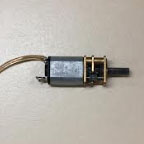[av_one_full first min_height=” vertical_alignment=” space=” custom_margin=” margin=’0px’ padding=’0px’ border=” border_color=” radius=’0px’ background_color=” src=” background_position=’top left’ background_repeat=’no-repeat’ animation=”]
[av_textblock size=’25’ font_color=” color=”]
Goliath Fall 2016
[/av_textblock]
[av_hr class=’invisible’ height=’-50′ shadow=’no-shadow’ position=’center’ custom_border=’av-border-thin’ custom_width=’50px’ custom_border_color=” custom_margin_top=’30px’ custom_margin_bottom=’30px’ icon_select=’yes’ custom_icon_color=” icon=’ue808′ font=’entypo-fontello’]
[av_textblock size=’25’ font_color=” color=”]
Motor Trade Off Study
[/av_textblock]
[/av_one_full]
[av_hr class=’invisible’ height=’-60′ shadow=’no-shadow’ position=’center’ custom_border=’av-border-thin’ custom_width=’50px’ custom_border_color=” custom_margin_top=’30px’ custom_margin_bottom=’30px’ icon_select=’yes’ custom_icon_color=” icon=’ue808′ font=’entypo-fontello’]
[av_textblock size=” font_color=’custom’ color=’#bfbfbf’]
By: Sou Thao (Electronics and Control Engineer)
Approved by Kristen Oduca (Project Manager)
[/av_textblock]
[av_three_fourth first min_height=” vertical_alignment=” space=” custom_margin=” margin=’0px’ padding=’0px’ border=” border_color=” radius=’0px’ background_color=” src=” background_position=’top left’ background_repeat=’no-repeat’ animation=”]
[av_textblock size=’16’ font_color=’custom’ color=’#6b6b6b’]
[/av_textblock]
[/av_three_fourth]
[av_one_full first min_height=” vertical_alignment=” space=” custom_margin=” margin=’0px’ padding=’0px’ border=” border_color=” radius=’0px’ background_color=” src=” background_position=’top left’ background_repeat=’no-repeat’ animation=”]
[av_heading tag=’h2′ padding=’10’ heading=’Introduction ‘ color=’custom-color-heading’ style=” custom_font=’#ff6a00′ size=” subheading_active=” subheading_size=’15’ custom_class=”][/av_heading]
[av_textblock size=” font_color=” color=”]
In order to carry a weight of 281 grams, as determined in the mass report [1], and to make Goliath as small as humanly possible due to the printing time requirement, Goliath will need a motor that can fit the chassis with a torque of at least 9.15oz*in. This torque was calculated from an experiment conducted with the previous Goliath, which gave us an idea of an estimated torque necessary to drive tracked vehicles. Given the torque, this motor trade off study consisted of researching different motors that can meet these specifications.
[/av_textblock]
[av_heading tag=’h2′ padding=’10’ heading=’Motor Specifications’ color=’custom-color-heading’ style=” custom_font=’#ff6a00′ size=” subheading_active=” subheading_size=’15’ custom_class=”][/av_heading]
[av_textblock size=” font_color=” color=”]
Tamiya 70168 Double Gearbox Motor
- Operating Voltage: 3V
- Gear Ratio Options: 12.7, 38, 115, 344:1
- Free-run motor shaft speed at 3V: 12300rpm
- Free-run current at 3V: 150mA
- Stall current at 3V: 2100mA
- Motor shaft stall torque at 3V: 0.5oz*in
[/av_textblock]
[av_hr class=’invisible’ height=’20’ shadow=’no-shadow’ position=’center’ custom_border=’av-border-thin’ custom_width=’50px’ custom_border_color=” custom_margin_top=’30px’ custom_margin_bottom=’30px’ icon_select=’yes’ custom_icon_color=” icon=’ue808′ font=’entypo-fontello’]
[av_textblock size=” font_color=” color=”]
Solarbotics GM6 Mini Gear Motor
- Gear ratio: 120:1
- Free-run speed at 6V: 157rpm
- Free-run current at 6V: 97mA
- Stall current at 6V: 563mA
- Stall torque at 6V: 21oz*in
- Free-run speed at 3V: 64rpm
- Free-run current at 3V: 64mA
- Stall current at 3V: 326mA
- Stall torque at 3V: 140z*in
- Size: 36.5×27.5x25mm
[/av_textblock]
[av_hr class=’invisible’ height=’20’ shadow=’no-shadow’ position=’center’ custom_border=’av-border-thin’ custom_width=’50px’ custom_border_color=” custom_margin_top=’30px’ custom_margin_bottom=’30px’ icon_select=’yes’ custom_icon_color=” icon=’ue808′ font=’entypo-fontello’]
[av_textblock size=” font_color=” color=”]
Polulu Micro Metal Gearmotor
- Gear ratio: 150.58:1
- Free-run speed at 6V: 150rpm
- Free-run current at 6V: 40mA
- Stall current at 6V: 700mA
- Stall torque at 6V: 28oz*in
- Size: 10x12x26mm
[/av_textblock]
[av_heading tag=’h2′ padding=’10’ heading=’Analysis of Motors’ color=’custom-color-heading’ style=” custom_font=’#ff6a00′ size=” subheading_active=” subheading_size=’15’ custom_class=”][/av_heading]
[av_textblock size=” font_color=” color=”]
Torque is important when considering DC motors. For robot applications, the gear motors have an added gear-down to reduce speed and increase torque. There are many applications for having more speed than torque and vice versa, such as race cars needing more speed to go fast or a truck that needs more torque to move heavier loads. Based on the Goliath, there needs to be a balance in torque and speed so it can go up an incline and stay within a distance from the BiPed. By looking at the specs of a DC motor, we can use the rated shaft speed, rated torque, and the gear ratios to select the best motor for our Goliath. First, to determine the speed, we can divide the rated shaft speed by the gear ratio. Next, to determine the torque, we can multiply the torque rating by the gear ratio. Thus, we can adjust the gear ratio or buy a motor with similar configurations to make our motor fast and powerful.
[/av_textblock]
[av_hr class=’invisible’ height=’20’ shadow=’no-shadow’ position=’center’ custom_border=’av-border-thin’ custom_width=’50px’ custom_border_color=” custom_margin_top=’30px’ custom_margin_bottom=’30px’ icon_select=’yes’ custom_icon_color=” icon=’ue808′ font=’entypo-fontello’]
[av_textblock size=” font_color=” color=”]
The plastic gearbox motors such as the GM6 had a motor stall torque of 21oz.*in. and dimension of 36.5×27.5×25 mm. This motor is good for its size, however, because we want to make our Goliath as small as humanly possible, we had to research other smaller motors.
[/av_textblock]
[av_hr class=’invisible’ height=’20’ shadow=’no-shadow’ position=’center’ custom_border=’av-border-thin’ custom_width=’50px’ custom_border_color=” custom_margin_top=’30px’ custom_margin_bottom=’30px’ icon_select=’yes’ custom_icon_color=” icon=’ue808′ font=’entypo-fontello’]
[av_textblock size=” font_color=” color=”]
The micro metal gearmotors were ideal for our application. Their size are 10x12x26 mm and they come in different sizes that can give us the necessary torque to drive our Goliath. Because they are made up of metal, these motors are more powerful than the plastic gearbox motors and they can drive more torque. For our purpose, we should choose a micro metal gearbox motor with a torque higher than 9.15oz*in.
[/av_textblock]
[av_heading tag=’h2′ padding=’10’ heading=’Conclusion’ color=’custom-color-heading’ style=” custom_font=’#ff6a00′ size=” subheading_active=” subheading_size=’15’ custom_class=”][/av_heading]
[av_textblock size=” font_color=” color=”]
From the motor trade off study, three different motors were compared and the best motor out of all three of them were the Polulu micro metal gear motors. They are relatively small, but are powerful enough to provide us with the amount of speed and torque needed for drive our application. Because our printing time requirement is at most 6 hours, our chassis will need to be small. Thus, the micro metal gear motors size of 10x12x26 mm will be able to fit within our chassis.
[/av_textblock]
[av_hr class=’invisible’ height=’20’ shadow=’no-shadow’ position=’center’ custom_border=’av-border-thin’ custom_width=’50px’ custom_border_color=” custom_margin_top=’30px’ custom_margin_bottom=’30px’ icon_select=’yes’ custom_icon_color=” icon=’ue808′ font=’entypo-fontello’]
[av_textblock size=” font_color=’custom’ color=’#ff6a00′]
Source Material
- http://arxterra.com/goliath-fall-2016-preliminary-project-plan/
- https://www.pololu.com/product/114/pictures
- https://www.pololu.com/category/60/micro-metal-gearmotors
- https://www.pololu.com/product/182
- http://www.robotshop.com/blog/en/how-do-i-interpret-dc-motor-specifications-3657
- https://www.intorobotics.com/2-simple-methods-choose-motors-wheel-drive-robots/
- http://www.robotshop.com/blog/en/drive-motor-sizing-tool-9698
[/av_textblock]
[/av_one_full]
